Photo


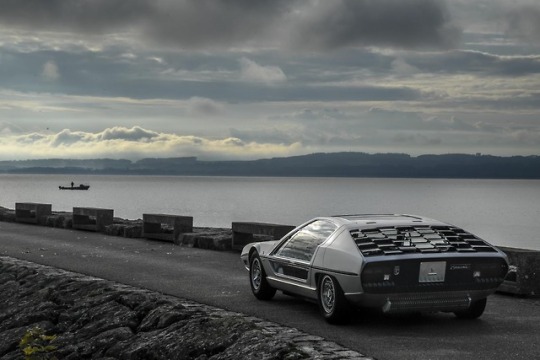



Lamborghini Polo Storico goes back in history, taking the Marzal to the GP de Monaco Historique once more
Sant’Agata Bolognese/Monte Carlo, 10 May 2018 – On 7 May 1967, shortly before the start of the Monte Carlo Formula 1 Grand Prix, His Serene Highness Rainier III, Prince of Monaco, completed the lap of honor on the track in a legendary car: the Lamborghini Marzal, with its glazed gullwing doors offering an almost unimpeded view of the interior and the silver leather upholstery. Princess Grace sat in the passenger seat, next to Prince Rainier. Photos of the couple in the Marzal travelled all around the world, turning this unique car into a legend. Since then, the Marzal’s engines have remained silent, hidden away from curious eyes. It will go on show again May 11-13 for the Grand Prix de Monaco Historique with the support of Lamborghini Polo Storico, celebrating its history by completing several laps on the same roads as in 1967. This is a unique opportunity to see the Marzal after 51 years in the setting where it became famous. It will be kept company by a Lamborghini Espada, the 2+2 series car designed in 1968, inspired by the idea and lines of the Marzal and produced in Sant’Agata Bolognese until 1978.
#lamborghini#marzal#grace kelly#grand prix de monaco#grand prix de monaco historique#lamborghini polo storico#lamborghini espada
7 notes
·
View notes
Photo

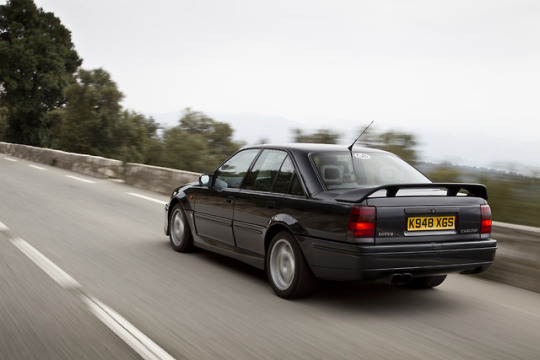
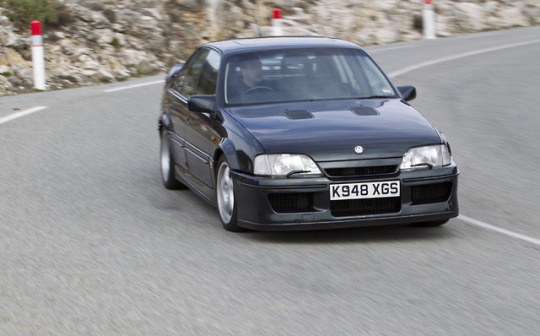
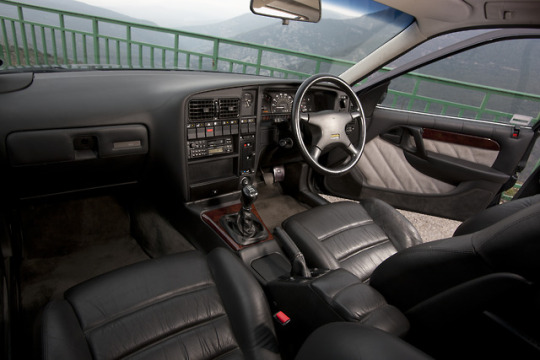
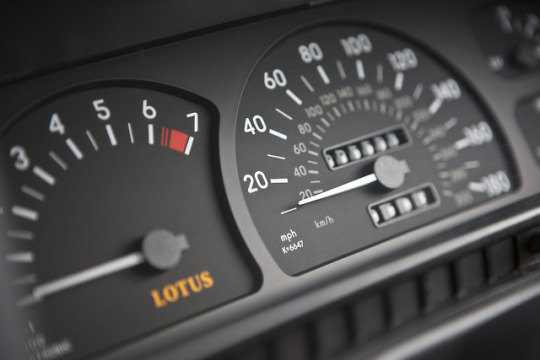
The Vauxhall Lotus Carlton
First unveiled in 1989, the Lotus Carlton became one of the Vauxhall’s most iconic models. This year the super-saloon celebrates 25 years since it was discontinued in 1992. Production of the Lotus Carlton (and its Lotus Omega sister car, sold on the continent) was originally set for 1,200 units, but the early ‘90s financial crisis stifled demand and led to the target being missed by 150 cars.
Only 275 right-hand drive Lotus Carltons were sold in Britain, each at the eye-watering cost of £48,000. Produced exclusively in Imperial Green, it appeared to be black in anything but direct light.
Lotus Engineering developed the Carlton’s MacPherson strut front and multi-link rear suspension, which was lowered, and also stiffened the car’s body to improve handling. But at the heart of the Lotus Carlton was an engine so potent that even the enthusiast motoring press were taken aback by its performance. With 377bhp at 5,500rpm and 419lb ft torque at 4200rpm, the Lotus Carlton’s 3,615cc straight-six, twin-turbocharged engine featured twin water-cooled inlet charge coolers. The net result was an outrageous 176mph top speed and a place in the record books as the world’s fastest production four-door saloon.
The interior, which is rather quaint today, was fully-loaded three decades ago, with anthracite leather seats and trim, fully reclining and heated front seats, polished wood inserts in the doors and dashboard, air-conditioning, a Grundig stereo radio/cassette and CD player, green-tinted glass, an electric sunroof and an alarm system.
2 notes
·
View notes
Photo
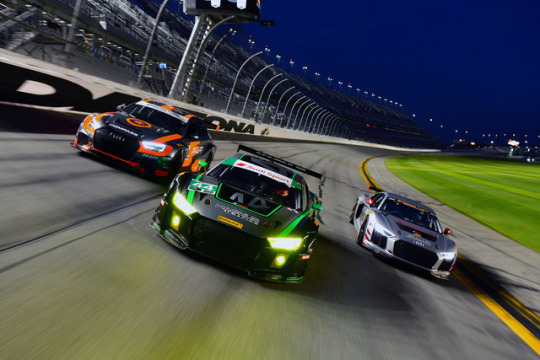

Audi RS 3 LMS #74 (Compass Racing), Rodrigo Sales/Kuno Wittmer; Audi R8 LMS #44 (Magnus Racing), Andrew Davis/Andy Lally/John Potter/Markus Winkelhock; Audi R8 LMS GT4 #14 (GMG Racing), Andrew Davis/George Kurtz/James Sofronas
#audi sport#audi#rs3#rs3 lms#74#rodrigo sales#kuno wittmer#44#Compass Racing#Magnus Racing#Andrew Davis#Andy Lally#John Potter#Markus Winkelhock#R8 LMS GT4#14#GMG Racing#George Kurtz#James Sofronas#North American IMSA Series#IMSA#SIDELINE SPORTS PHOTOGRAPHY
4 notes
·
View notes
Photo







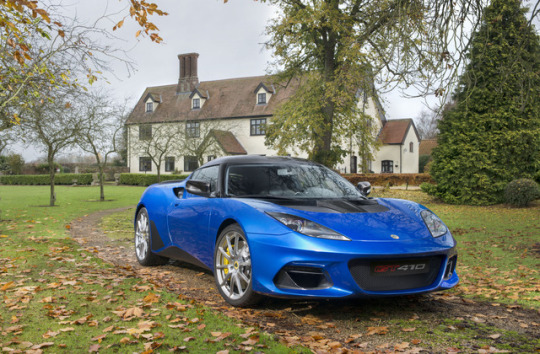

Relentless in its development of world-class sports cars, Lotus has unveiled the new Evora GT410 Sport to complete the revised line-up of Hethel’s fastest model.
Launched in Lotus’ 70th year and ahead of its anniversary celebrations, the new Evora GT410 Sport takes one of Lotus’ success stories and refines it through the application of enlightened design. Available in both 2 seat and 2+2 configurations, and in manual and automatic transmissions, the Evora GT410 Sport draws from the phenomenal Evora GT430 to provide advanced aerodynamics to an already celebrated sports car.
Combining the latest design philosophy with a car acclaimed by both critics and customers, it packs raw performance with Lotus’ latest aerodynamic developments, to provide a first-class replacement for the Evora Sport 410 model.
Employing key elements of the GT430’s sculptured body style, including specifically designed new composite front and rear body panels, but without some of the high downforce elements, the new Evora GT410 Sport enjoys a far subtler and sleeker silhouette. However, as with all Lotus sports cars, aerodynamic downforce is a requirement and this new GT-class coupe generates up to 96kg of downforce (50% more than the Evora Sport 410) making it the new benchmark when compared to similarly priced rivals.
The Evora GT410 Sport is powered by a specially calibrated and tuned higher-output version of Lotus’ supercharged, 3.5-litre 6-cylinder engine with integrated water-to-air charge cooler, producing 410 hp at 7000 rpm and 420 Nm of torque from 3500 rpm. It powers the GT410 Sport from 0-60 mph in just 3.9 seconds (automatic) and the manual version in 4.0 seconds.
The development of the new Evora GT410 Sport afforded Lotus the opportunity to optimise mass, resulting in an unladen weight of 1,297 kg and a lightest possible dry weight of 1,256 kg (including all the optional titanium exhaust, saving 10 kg, and the Lotus-tuned Öhlins TTX aluminium two-way adjustable dampers, saving 13 kg) – a total saving of 98 kg when compared to the Evora 400 benchmark, and up to 28 kg less than the already featherweight Evora Sport 410.
Launching the new Evora GT410 Sport, Jean-Marc Gales, CEO, Group Lotus plc said, “We are continually exploring new ideas, innovating and evolving our cars in pursuit of perfection. The new Evora GT410 Sport takes the lessons learnt from the development of the GT430 to deliver something outstanding and highly capable.”
Lotus Evora GT410 Sport in more detail
Lotus’ newly defined GT-class sports car captures the essence of the company’s headline model. The application of top-down evolution introduces the new front and rear aesthetic, first seen on the GT430. As a result, the car’s design combines considerable physical presence with natural aerodynamic ability.
The revised front panel features two enlarged carbon fibre ducts, with integrated air blades, to efficiently move air around the front wheels reducing turbulence and decreasing drag. Additional downforce is created by the combination of the deep front splitter and new motorsport-derived rear diffuser, mounted beneath the new style metal mesh grille which gives a cleaner finish. Sculptured carbon fibre ducts behind each rear wheel vent high-pressure air as quickly as possible from the rear wheel arches, balancing downforce.
Cumulatively this all works to boost downforce to 96 kg at 190 mph, a sizable jump of 50% over the outgoing Evora Sport 410, and a massive three-times that of the Evora 400 with an improved drag coefficient. This elevates the Evora GT410 Sport to the top ranks of Lotus’ most aerodynamically efficient road cars.
As with all high-performance Evoras, carbon fibre plays a considerable role in the car’s construction. Standard carbon composite components include the front access panel, roof panel and a one-piece louvred tailgate with integrated spoiler, as well as the elements within the front air blade system and rear wheel exit ports.
This focus on the car’s critical mass delivers its headline power-to-weight ratio of 326 hp/tonne and the top speed to 190 mph (305 km/h).
Despite the car’s low mass, a range of lightweight options can be specified for the Evora GT410 Sport. This includes a titanium exhaust, cutting 10 kg from beyond the car’s rear axle.
Making the most of the traction on tap, the Evora GT410 Sport uses Michelin Pilot Sport Cup 2 tyres (235/35 R19 at the front and 285/30 R20 at the rear) with a sports suspension package of Eibach ultra-light, low-sideload springs and Bilstein sports dampers – all fitted as standard.
A touring suspension package is available as a no-cost option, featuring Bilstein® non-adjustable dampers, with touring specification, and Michelin Pilot Sport 4S tyres.
For full damper adjustability, a race suspension package using Lotus-tuned lightweight Öhlins TTX aluminium two-way adjustable dampers (twenty click adjustment compression and rebound) which save 13 kg, can be specified to tune the Evora GT410 Sport to precisely suit particular road or track conditions.
Reducing un-sprung mass, ultra-lightweight, fully machined, forged aluminium wheels (19" 8J front and 20" 9.5J rear 10 spoke alloy wheels) are available in either silver or matt black. The option of upgrading to one inch wider (10.5J) rear wheels as used on the Evora GT430, is available and stopping power comes courtesy of AP Racing four-piston calipers front and rear with lightweight 2-piece cross-drilled and ventilated brake discs (front 370mm x 32mm, rear 350mm x 32mm).
In addition to Lotus’ slick, six-speed manual gearbox with a Torsen type limited slip differential (LSD), the Evora GT410 Sport is also available with an automatic transmission option. Slightly quicker through the gears, with a 0-60 mph time of 3.9 seconds, the six-speed automatic transmission utilises an optimised gearbox ECU for ultra-fast changes. Gear selection is made via lightweight aluminium paddles mounted to the steering wheel.
The new Evora GT410 Sport features four driver-selectable ESP modes – selected via a dashboard switch. ‘Drive’, ‘Sport’, ‘Race’ and ‘Off’. Sport and Race settings increase throttle response, respectively increasing traction slip - allowing the driver a finer degree of control before intervention.
As with its Evora stablemates, the Evora GT410 Sport cabin includes Lotus’ beautifully detailed carbon race seats (2+0 configuration only) and carbon door sill inserts. The steering wheel, dashboard, door panels, transmission tunnel, centre console and instrument binnacle are all trimmed in black Alcantara®, complemented by contrast twin colour stitching. Optional Sparco race seats are available in both 2+0 and 2+2 configurations with the latter requiring either the optional wider 10.5J rear wheel option, as featured on the Evora GT430, or the lightweight forged wheel option from the Evora 400, which benefits from a 9.5J rear wheel size. An integrated 7” touch-screen infotainment system with AppleCarPlay and Android Auto, Bluetooth® functionality, satellite navigation and reversing camera can also be specified.
Jean-Marc Gales concluded, “Starting 2018 in style, the Evora GT410 Sport is just the beginning of an incredibly strong year for Lotus. The core principles of Lotus and our founder Colin Chapman remain paramount as we work on the next generation of vehicles whilst building our best sports cars yet.”
Every new Lotus Evora GT410 Sport can be personalised through the increasingly popular Lotus Exclusive programme. Developed by the Lotus Design team to inspire customers, it combines traditional British craftsmanship with the best of modern design and allows owners to tailor vehicles to their personal taste. Since its introduction last year, roughly a third of all new Lotus cars now undergo some form of customisation.
The new, fully homologated Lotus Evora GT410 Sport range can be ordered now in European and Asia Pacific markets, following in summer 2018 for the USA and China.
0 notes
Photo






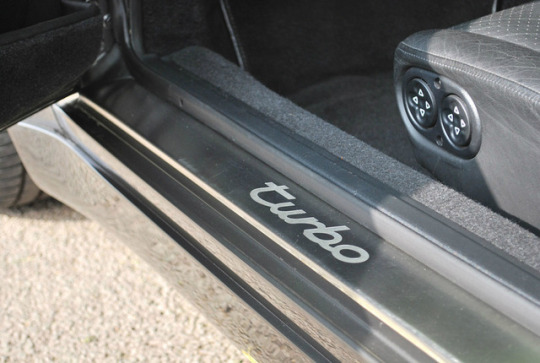



Porsche worthy of a Sultan could fetch £700,000 at Coys’ London auction
A special 1995 Porsche 993 Turbo Cabriolet once owned by the Sultan of Brunei will be put under the hammer by international auctioneers Coys along with more than 80 classic and sports car at their ‘Spirit of Motoring’ auction in London’s Royal Horticultural Halls on October 17th.
The car is one of only 14 of the 993 Turbo Cabriolets produced by Porsche and is the only right hand drive example in existence. It is estimated at £500,000 to £700,000.
Porsche’s 993 Turbo model had garnered praise from the media and owners alike, but the marque had not produced a cabriolet version. Herr Fritz Haberl, owner of the significant MAHHAG southern German chain of dealerships based in Munich, was convinced there was a market for a 993 Turbo Cabriolet, and approached Porsche with the idea.
Things went rather quiet after the meeting and just when Haberl thought he had reached a dead end, Porsche came back with a response: if Haberl could find 12 buyers up front, Porsche would build the cars.
Chris Routledge, CEO of Coys, said: “These were set to be one of the most exclusive models Porsche had ever built, and hid much of their performance potential under a subtle and stylish cabriolet exterior. Porsche eventually built just 14 of these cars with the chassis number sequence 8501-8514, the car on offer being chassis number 8513.”
Haberl reportedly sold six cars to Germany and the rest went to clients throughout the world. Chassis #8513 found its way to none other than the Sultan of Brunei, where it was registered to his collection in May 1995.
Routledge added: “The retail price at the time was U$D176,000. These exclusive cars were fitted with unique features, including 17 inch cup alloy wheels, electrically operated Komfort seats, rear spoiler, air conditioning and a special four-brand exhaust system, amongst others. The Porsche certificate of Authenticity for #8513 extends to two pages in order to cover the many options fitted!”
This unique 993 Turbo Cabriolet, which has been part of a significant European collection since 2009 and shows just over 9,000 kilometres on the clock, offers collectors a rare chance to join a tremendously exclusive club.
The auction also features a selection of investment quality classics, including a 1971 Ferrari Dino 246 GT (estimated £200,000 - £250,000), a 1965 Jaguar E-Type Series 1 rebuilt to semi-lightweight roadster specification (£180,000 - £210,000), a 1938 Bentley 4 1/4 Sportsman’s Coupe by De Villars displayed at the 1938 Paris Motor Show (£120,000 - £140,000), a 1955 Austin Healey 100 M specification from the Sorn Castle Collection (£48,000- £60,000) and a 2004 Mclaren Mercedes Benz SLR with just 1,945 km from new (£200,000 - £250,000).
Other important lots on offer range from a 2004 Ferrari 360 Challenge Stradale (£130,000 - £160,000) to a 2016 Evanta DB4 GT Zagato (£130,000 - £160,000), a 1934 Bentley 3.5 litre Drophead Coupe by James Young (Refer Department), a 1967 Porsche 911 Short Wheel Base (£100,000 - £125,000), a 2001 Honda NSX Targa (£75,000 - £95,000), a 2004 Ferrari 360 Spider (£75,000 - £95,000) and a 1962 Porsche 356B 1600S Cabriolet (£110,000 - £130,000).
Catalogue: www.coys.co.uk/the-spirit-of-motoring
Location: Royal Horticultural Society, Lindley Hall, Vincent Square, Westminster, London, SW1P 2PE
Date: 17 Oct 2017, 7:00PM
Viewing Monday 16th October from 12.00 noon to 8.00pm
On the day of the sale from 10.00am to start of sale
### For further information about Coys, please contact:
David Barzilay
T: +44 (0) 7860 322 333| M: +44 (0) 207 544 8980 | E: [email protected]
Julian Menendez
T: +44 (0) 7838 547 531 | M: +44 (0) 207 544 8831 | E: [email protected]
COYS
Valuers and auctioneers founded in 1919
www.coys.co.uk
#Coys#coysauction#1995 Porsche 993 Turbo Cabriolet#Porsche 993 Turbo Cabriolet#Porsche 993 Turbo#porsche#933#turbo#Sultan of Brunei
1 note
·
View note
Photo

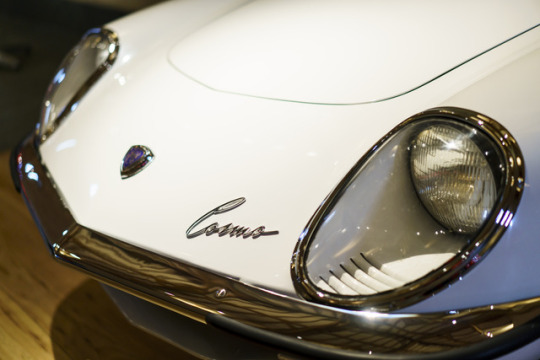
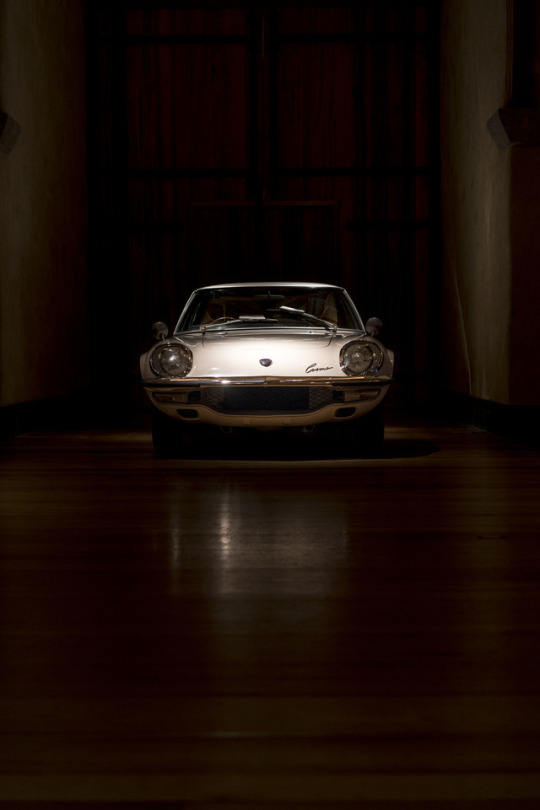

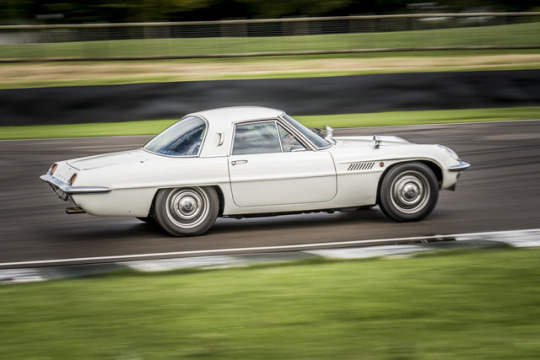

Back in 1967, the Cosmo Sport was the world’s first car powered by a twin-rotor engine. Known outside Japan as the 110S, it was also Mazda’s first sports car, supplying the DNA that has gone into legendary models like the Mazda RX-7 and Mazda MX-5, and indeed every vehicle the Japanese marque manufactures today. Although only 1,176 were built, the Cosmo Sport was monumental for Mazda, marking its transformation from a maker of predominantly trucks and small cars to an exciting, unique brand characterised by its convention-defying approach to engineering as well as design.
Development of the power plant under the Cosmo Sport’s bonnet exemplifies the company’s challenger spirit and a never-give-up tradition still evident 50 years later. Mazda’s engineers surmounted numerous hurdles to making the rotary engine commercially viable, testing Cosmo Sport prototypes over hundreds of thousands of kilometres prior to the market launch. Although dozens of companies including most major carmakers signed licensing agreements with NSU to develop the German car and motorcycle maker’s new technology, only one was successful.
Having harnessed the Rotary's potential to deliver performance levels equivalent to much larger and heavier reciprocating piston engines, Mazda would go on to build almost 2 million rotary-powered vehicles, also achieving considerable racing success. The RX-7, for example, dominated its class at IMSA (International Motor Sport Association) events throughout the 1980s. But Mazda’s biggest single triumph on the track came in 1991, when a Mazda 787B powered by a 2.6-litre four-rotor powerplant producing 710PS won the 24 Hours of Le Mans. It was the only non-reciprocating engine ever to win the illustrious endurance race, and the first victory by an Asian brand.
This willingness to try new things and relentlessly push limits remains synonymous with Mazda. The approach spawned the MX-5, whose Jinba-Ittai driver-and-car-as-one ethos has made it the most popular roadster ever. It also brought the world SKYACTIV Technology. Lightweight and unusual like the rotary engine, the SKYACTIV range of powertrains, platforms, car bodies and other technology found in today’s Mazdas are the products of engineering breakthroughs to achieve an extraordinary combination of performance and efficiency. SKYACTIV engines, for example, overcome the drawbacks to extreme compression, increasing the driving fun factor while at the same time reducing fuel consumption and emissions – and differentiating Mazda from its competitors.
https://www.mazda-press.com/uk/
1 note
·
View note
Photo

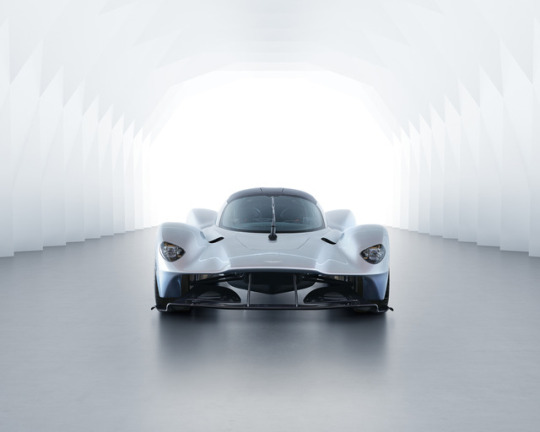








12/7/2017 ASTON MARTIN VALKYRIE: SECRETS OF EXTERIOR AND INTERIOR DESIGN REVEALED
Aerodynamic development has driven evolution of hypercar’s exterior design
Exquisite, innovative detailing reflect the uncompromising pursuit of performance
Ultra-efficient interior packaging achieves space for two 98 percentile adults
Cockpit features F1-style reclined driving position and minimalist ergonomics
12 July 2017, Gaydon: Since the first reveal of the Aston Martin Valkyrie hypercar in July 2016, Aston Martin, Red Bull Advanced Technologies and project partner AF Racing have been working intensively to further develop the Valkyrie’s aerodynamics, body styling and cockpit packaging.
The teardrop-shaped cockpit’s upper body surfaces and lower tub contours follow the envelope of space available between the huge full length Venturi tunnels that run either side of the cockpit floor. Drawing huge quantities of air beneath the car to feed the rear diffuser, these tunnels are the key to generating the Aston Martin Valkyrie’s extraordinary levels of downforce while keeping the upper body surfaces free from additional aerodynamic devices that would spoil the purity of the styling.
To maximise interior space the seats are mounted directly to the tub, with occupants adopting a reclined ‘feet-up’ position reminiscent of today’s Formula One and Le Mans Prototype race cars, ensuring driver and passenger are extremely safe, perfectly supported and feel completely at one with the car. A four-point harness comes as standard, while an optional six-point harness will be offered for those who intend to do more track driving.
The Aston Martin Design team were keen to keep distractions to a minimum and focus the driver on the road ahead. To this end all switchgear is located on the steering wheel, with all the vital signs shown on a single OLED display screen. The steering wheel is also detachable, both to aid ingress and egress, and to serve as an additional security device.
Great attention has been taken with the glasshouse design to ensure forward and peripheral side-to-side vision is virtually uninterrupted. To avoid any unwanted aerodynamic disturbance or stylistic ‘clutter’ traditional door mirrors have been replaced by discreetly mounted rear facing cameras in each of the Aston Martin Valkyrie’s flanks. These feed two displays which are positioned at the base of each A-post to mimic the view provided by conventional door mirrors. The all-enveloping bodywork and roof-mounted engine air intake means there is no rear window, negating the requirement for a rearview mirror.
Matt Hill, Aston Martin Creative Director of Interiors said of the Aston Martin Valkyrie’s cockpit design: “It’s been a tremendous challenge to make the interior packaging work. We’ve embraced Red Bull Racing’s Formula One ethos and approached from a different angle than conventional road car design. In this instance, we’ve started from a position where you think something is impossible and work at it until you find a way to make it work. We’ve been fighting for millimetres everywhere, but the battle has been worth it, as it’s been fantastic seeing customers try the interior buck for size. They love the ritual of getting in and how it feels to be sat behind the wheel. They’re also genuinely surprised at how the car just seems to swallow them. You really do have to sit in it to believe there is genuine space for two large adults.”
While the essence of the original Aston Martin Valkyrie exterior design remains unchanged, Adrian Newey’s pursuit of downforce and aerodynamic efficiency has driven many detail changes to the bodywork. These requirements have been faithfully incorporated into the design by the Aston Martin Design Team in a genuine case of form following function.
One of the biggest changes in this latest model are openings in the body surface between the cockpit and front wheel arches, Adrian Newey having found that they were the key to achieving considerable gains in front downforce. It was then the job of the Aston Martin Design Team to integrate these new apertures into the overall design and ensure they had aesthetic merit as well as aerodynamic function.
While aerodynamics and downforce are the dominant story, Aston Martin Valkyrie features some delightful details. Some of the most striking are the headlights, which take inspiration from the pure functionality of a Formula One car’s components. Aston Martin’s designers stripped things back to the bare essentials, celebrating the engineering rather than concealing it behind cladding. With the low and high beam elements attached to an intricate exposed anodised aluminium frame not only are the headlamp units a work of art, but they are 30-40 per cent lighter than the lightest series production headlamps available to Aston Martin.
The same approach has been taken with the Aston Martin ‘wings’ badge that adorns the nose. With the regular badge considered too heavy, and a simple sticker not befitting for a car of the Aston Martin Valkyrie’s quality and cutting-edge nature, the Aston Martin Design Team came up with a chemical etched aluminium badge just 70 microns thick. That’s 30 per cent thinner than a human hair, and a remarkable 99.4 per cent lighter than the regular enamel wings badge. The badge (nicknamed the ‘lacewing’) is then attached to the painted body and covered with a perfectly smooth coat of lacquer.
Further detail innovation can be found at the rear of the car, with the centre high mounted stop light (CHMSL). Mounted on the tip of the small shark’s fin that runs down the spine of the Aston Martin Valkyrie’s airbox and rear bodywork, the light is just 5.5mm wide and 9.5mm high. Illuminated by a red LED it is the world’s smallest CHMSL and evidence of how every element of the Aston Martin Valkyrie is scrutinised in the pursuit of eliminating unnecessary weight and drag.
Aston Martin Creative Director of Exterior Design, Miles Nurnberger, said of the Aston martin Valkyrie’s design evolution: “I would say we’re around 95 per cent of the way there with the exterior design. Much of what you see is actually the structure of the car, so this had to be signed-off relatively early in the project. The remaining areas of non-structural bodywork are still subject to evolution and change as Adrian [Newey] continues to explore way of finding more downforce. The new outlets in the body are a case in point. Ordinarily the last thing we’d want to do to one of our surfaces is cut a hole in it, but these vents work the front wings so much harder that they’ve found a significant gain in front downforce. The fact that they are so effective gives them their own functional beauty, but we’ve finessed them without impacting on their functionality. That they also serve as windows through which to view the fabulous wing section front wishbones is a welcome bonus!”
1 note
·
View note
Photo

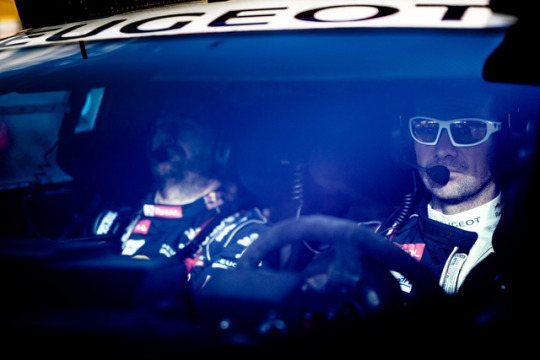






PEUGEOT DREAM TEAM CONTINUE TO LOCK OUT THE FRONT
11/07/2017
* Three days of the Silk Way Rally completed and the Peugeot drivers are still first, second and third in the overall rankings and even widen the gap to the other competitors.
* Sebastien Loeb / Daniel Elena aboard the brand new Peugeot DKR Maxi win the complex stage today to move back into the overall lead, while Stephane Peterhansel / Jean Paul Cottret are second.
* Cyril Despres / David Castera hit problems but still hold onto third overall.
The third stage of the Silk Way Rally presented very different conditions to the two shorter stages seen before: extensive gravel tracks and short grass, with dry weather as opposed to the earlier deluges. The stage was also much longer: 329km forming a mental and physical endurance test that lasted over 3h10m - twice more than yesterday- and was completed at very high speed of 200kph. The scenery may be different today but the overall results are the same: three Peugeots in the top three positions, despite problems for last year’s Silk Way Rally winner Cyril Despres. Sébastien Loeb was pushing hard right from the start and quickly made time on teammate Stéphane Peterhansel, resulting in a 4m34s gap between the two drivers in the stage rankings and 3m15s gap in the overall classification. The following competitors are now almost 40m off the Peugeot ‘Dream Team’. Just a few kilometers before halfway point of the stage, Cyril Despres made a minor navigational mistake and got trapped in a hole, where he stayed stuck for 12m. As a result, it was not a Peugeot one-two-three on the stage today, but Cyril keeps third in the overall rankings, with a comfortable 21m cushion.
Sébastien LOEB, Driver Team Peugeot Total
Winner of Silk Way Rally Stage 3 / 1st overall
“I’d say that it was a tricky day but it went well for us. We started third and caught Cyril after about 50 kilometres and Stephane after about 125 kilometres, so from then on we were first. Daniel did a really good job because the navigation was really not easy; no major mistakes. Apart from that, we didn’t have any big problems today and the Peugeot DKR Maxi was perfect as well. It’s a proper rally raid experience.”
Stéphane PETERHANSEL, Driver Team Peugeot Total
2nd of Silk Way Rally Stage 3 / 2nd overall
“It’s not so often that you get a stage like this on the Silk Way before leaving Russia; this is normally the type of stage that you see later on in the rally. Today was very nice! I liked the stage a lot but the navigation was really complicated; especially when you are first on the road, with lots of little gravel tracks running through the grass. So it’s hard to know which direction is the right one. Definitely this was the most complicated stage of the rally so far, so we are happy to get through it. And we had nice weather as well, which is a bit of a contrast to before!”
Cyril DESPRES, Pilote Team Peugeot Total
4th of Silk Way Rally Stage 3 / 3rd overall
“Not a good day for us, but it could have been much worse. We got off course then became stuck in quite a deep hole and finally lost much time. So I’m disappointed but it’s not the end of the world. We have a long way still to go and every chance of doing well.”
© MCH Photography / PeugeotSport
#peugeot#dkr maxi#3008dkr maxi#silk way rally#silkwayrally#sébastien loeb#stéphane peterhansel#cyril despres
1 note
·
View note
Photo









The fastest and most powerful road-approved 911 is ready for launch: The new Porsche 911 GT2 RS will celebrate its world premiere at the Goodwood Festival of Speed in the UK (June 30 to July 2).
0 notes
Photo
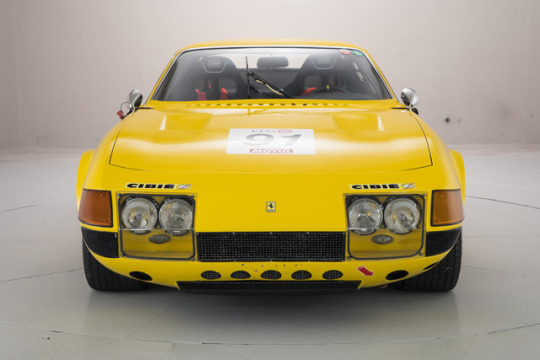


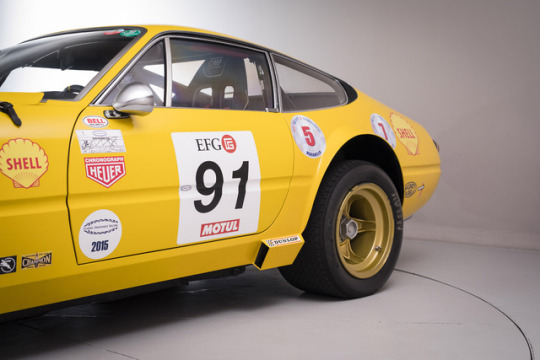
(London – June 30th 2017)
An exceptional road and race-ready Ferrari 365 GTB/4 Competizione is now available at leading London classic car retailer Hexagon.
The 365 GTB/4 is arguably one of the world’s most recognisable cars and was warranted the unofficial name of Daytona – created by sections of motorsport media to commemorate Ferrari’s exceptional 1-2-3 finish at the 1967 24 Hours of Daytona.
The Competizione has been inspected thoroughly by the team of experts at Hexagon. The car represents the racing version of the Daytona, which was first produced in 1969. Developed from the standard road cars, three series of five client competition examples were built at the factory’s “Assistenza Clienti” department in Modena. The 1973 model at Hexagon represents the third series, which boasts an aluminum bonnet and boot lid, in addition to the same increased flares around the wheel arches to accommodate wider wheels and tyres seen on the series 2.
The engine in the series 3 Competizione was the same as the 4.4 litre Colombo V12 seen in the road cars but was tuned up to pump out 450bhp. The last major representation of the cars pedigree was at the 1979 24 Hours of Daytona, where a 1973 car took victory in its class and 2nd place overall.
Introduced at the Paris Salon in 1968, the Daytona became an instant hit with rock stars and the privileged elite. Whilst many were displeased with the radically different design details of the 365 GTB/4, with its traditional rounded design replaced with a sharp-edged styling, all found the sheer speed of the car a joy to behold.
The Ferrari available at Hexagon, chassis number 16935, was commissioned around the turn of the century to be converted into a Group 4 competition example, bringing it up to the car’s original 1973 specification. It has since competed successfully in various historic events and comes complete with official FIA documentation.
Paul Michaels, chairman of Hexagon Classics, said: “It goes without saying that the Ferrari 365 GTB/4 has a unique story, ranging from styling to its racing pedigree and the origins of the name Daytona. I have had the privilege of dealing with a lot of Daytona’s in the past and this particular recreation is one of the finest examples I have ever come across. This highly documented model settled in the USA until its 1999 conversion into the original 1973 racer and is now in our North London showroom, after I personally gave it a close examination, ready to be taken straight to the circuits of the world.”
This remarkable Ferrari is now available to view at Hexagon Classics’ showroom in north London.
Hexagon Classics are world leaders when it comes to classic and modern classic cars. The showroom is always restocked and full of some of the world’s most sought-after heritage vehicles. The showroom has since become a cultural hub with the opening of Hexagon Classic Design, a new art gallery and a truly vibrant space, showcasing the form and the function of a wide mix of ranges, products and art.
31 notes
·
View notes
Photo

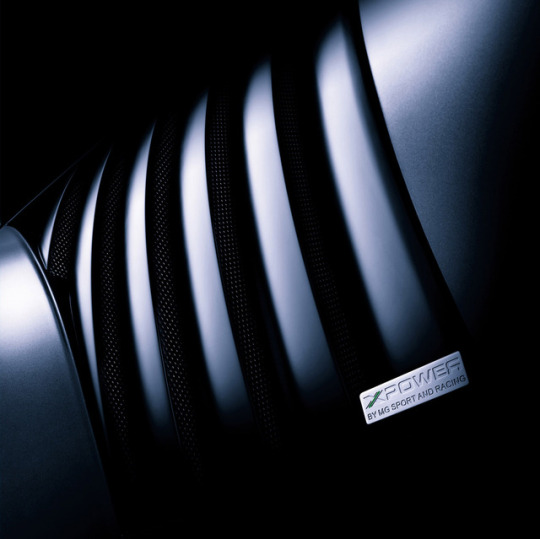

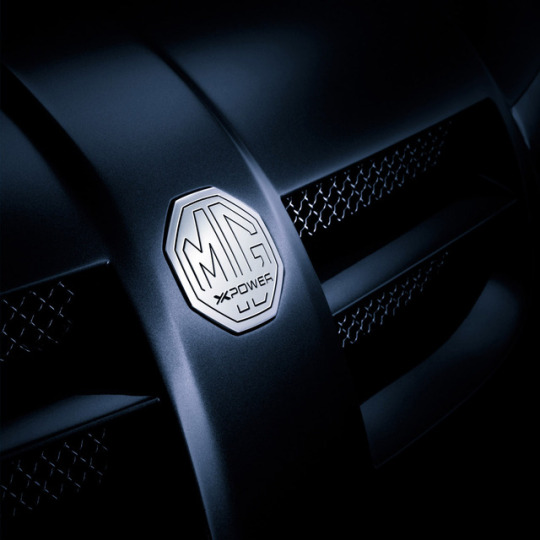



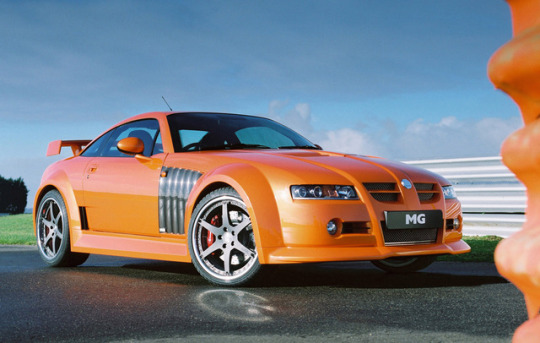

MG XPower SV was a sports car produced by MG. The car's baseline model eventually cost £65,000, with the uprated XPower SV-R model costing £83,000.
0 notes
Photo

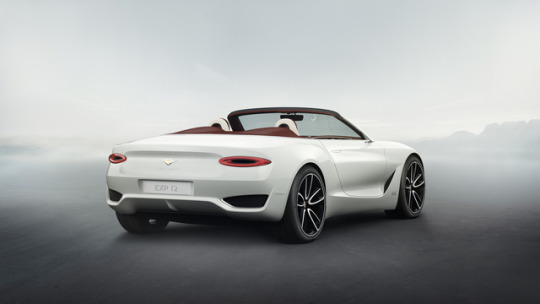

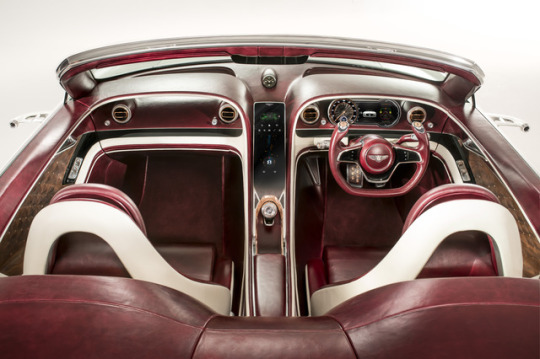

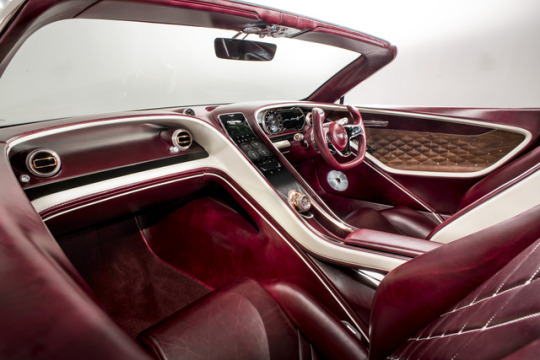
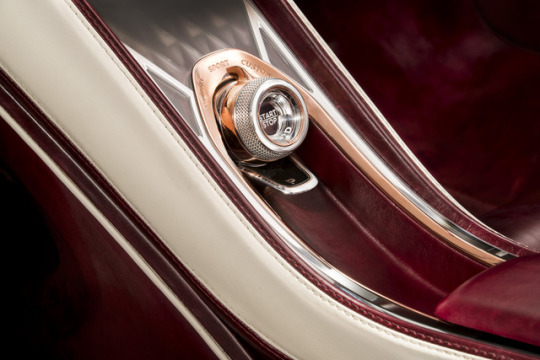
(Shanghai, 19 April 2017) Bentley’s EXP 12 Speed 6e makes its debut in China today at the 2017 Auto Shanghai. The concept showcases the British brand’s ambition to define the electric luxury segment and will allow Bentley to gauge public opinion and customer feedback to help shape its future luxury strategy.
Wolfgang Dürheimer, chairman and chief executive of Bentley Motors, said: “The EXP 12 Speed 6e is a concept to show that Bentley is defining electric motoring in the luxury sector, with the appropriate technology, high quality materials and refinement levels you’d expect from a true Bentley.
“Bentley is fully committed to China – it is a vital market for us. We are focusing on developing an electric model in the future which will meet the luxury mobility needs of customers here and right around the world,” Dürheimer added.
An all-electric Bentley will not compromise the quality, refinement and high performance levels expected of the luxury brand. These renowned Bentley characteristics such as immediate, effortless surge of torque and grand touring range will be combined with new high performance technology such as rapid inductive charging and state-of-the-art on board concierge-style services for an effortless ownership experience.
Bentley’s vision is for customers to benefit from high-speed inductive charging and provide a range sufficient for grand touring requirements. An electric Bentley would, for example, be able to drive between London and Paris or Milan and Monaco on a single charge and the on board experience will be enhanced for both driver and passenger thanks to the integration of state-of-the-art technology.
A fusion of cutting-edge technology and beautiful materials is evident right throughout EXP 12 Speed 6e’s luxuriously appointed cabin, ensuring that the brand’s use of technology is not cold or emotionless. The entire central console, for example, is hewn from a solid piece of elegantly curved glass encompassing a high-definition OLED screen. All of the car’s principle onboard controls are accessible from here, including navigation, entertainment and climate control.
Handmade, cut-glass sections on the steering wheel contain the controls for media, communications, navigation and car set-up. There are also two buttons featured at the top of the cut-away steering wheel, one offering an instant performance boost and the other the ability to limit speed, in urban areas for example.
The passenger, meanwhile, has their own control panel on the front fascia with access to social media, email and entertainment.
Exquisite copper elements around the gear selector, Bentley Dynamic Drive dial and in the door veneer panels are integrated into the cabin to highlight the electric performance potential of the concept’s advanced new powertrain.
The car’s intelligent infotainment system is the central brain to access many real world services using connected-car Apps.
On the outside, the iconic Bentley mesh grille features a complex 3D geometry and smoked finish with copper highlights that identify the Bentley EXP 12 Speed 6e as a fully electric vehicle. When the car is running the ‘6e’ logo illuminates in a striking, vibrant white.
The exterior design is an expression of muscular, athletic surfaces inspired by contemporary architecture, the natural world and the aerodynamic shapes of aircraft fuselages.
It represents a natural evolution of Bentley’s design DNA and signifies future design direction, taking the famous powerline and haunch to new levels of drama and tension. When combined with muscular proportions and an athletic stance through the use of a short front overhang, long bonnet, low grille and wide rear, the exterior styling hints at the high-performance potential of the car.
The twin bonnet scoops act as highly effective heat sinks that supply additional cooling to the battery and powertrain.
The wing mirrors – which are cameras rather than traditional reflective glass – are exceptionally sleek and were inspired by the sculptural form of stealth aircraft fuselages.
When rapid inductive charging is not available, EXP 12 Speed 6e can be connected to a mains AC power supply via the auxiliary charging point, subtly concealed behind the rear number plate.
#exp 12 speed 6e#bentley#12 Speed 6e#Speed 6e#12 speed#shanghai#auto shanghai#concept#all-electric#electric
0 notes
Photo
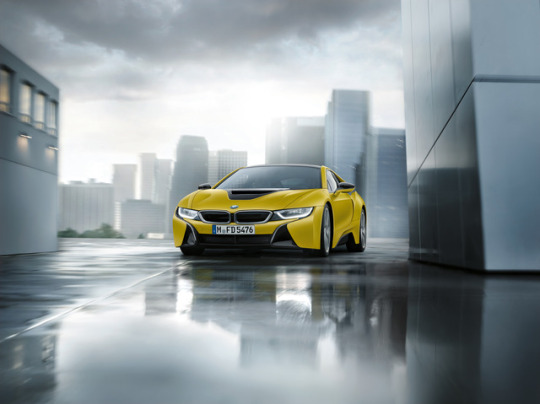
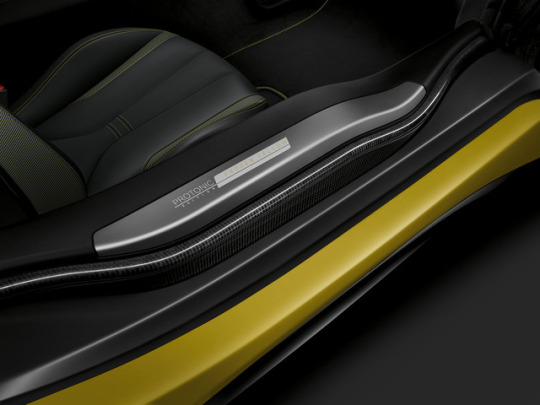
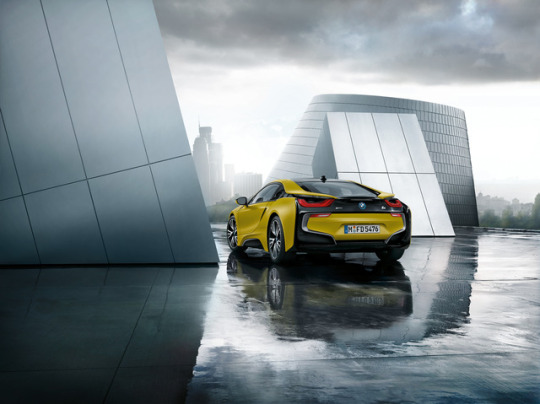

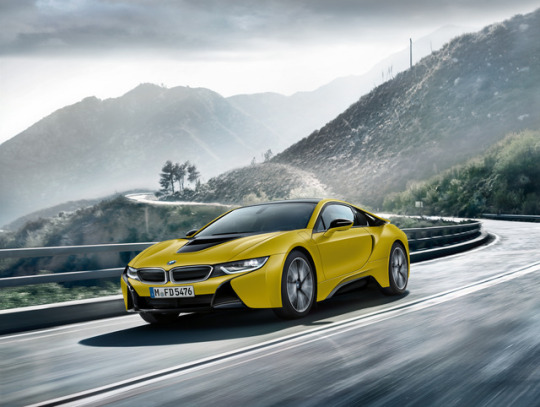

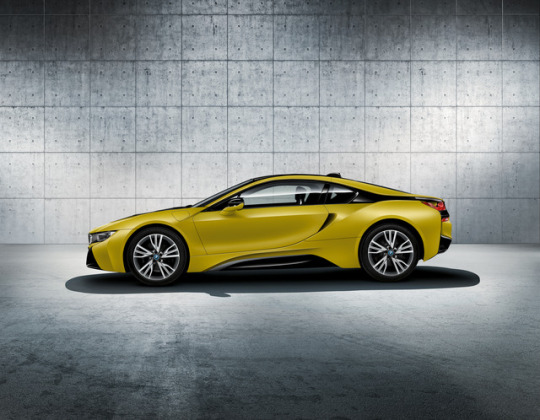


The new BMW i8 Protonic Frozen Yellow Edition
Making its debut public appearance at the Shanghai 2017 is the latest special-edition version of the BMW i8 plug-in hybrid sports car.
0 notes
Photo

THE ASTON MARTIN VALKYRIE: AM-RB 001 HYPERCAR TAKES ITS NAME FROM THE GODS
Continuation of a naming tradition stretching back seven decades
Joins famous lineage of Aston Martin ‘V’ cars
Valkyrie name taken from ancient Norse mythology
6 March 2017, Gaydon: The revolutionary hypercar being co-developed by Aston Martin and Red Bull Advanced Technologies, formerly identified by its codename AM-RB 001, has now been officially named the Aston Martin Valkyrie.
The name continues a fine tradition of Aston Martin ‘V’ cars. This began back in 1951 with Vantage, which was selected as a name to distinguish high performance variants of the then current model, the DB2. Boasting 125bhp versus 105bhp for the standard engine, the Vantage represented a significant increase in performance and desirability. The first time the Vantage badge appeared was on the side of the DB5.
It remained a name reserved for the most potent model derivatives until 2005, when the Vantage became a model line in its own right. Twelve years later the acclaimed family of V8 and V12-powered models has made the Vantage the most successful model in Aston Martin’s history.
Virage, Vanquish and the Aston Martin Vulcan – Aston Martin’s very own God of fire – are more recent ‘V’ cars to continue this lineage. Now, seven decades after the Vantage name started it all, the Aston Martin Valkyrie propels this uniquely distinctive and lyrical family of model names to another level.
For Aston Martin’s Chief Creative Office, Marek Reichman, Valkyrie perfectly captures the drama of what is not only the ultimate Aston Martin, but the ultimate expression of hypercar design, engineering and performance: “Aston Martin model names have deep meaning. They need to inspire and excite. To tell a story and enrich a narrative that stretches back some 104-years. The Aston Martin Valkyrie is an incredibly special car that demands an equally remarkable name; an uncompromising car that leaves nothing in reserve. The connotations of power and honour, of being chosen by the Gods are so evocative, and so pertinent to a car that only a fortunate few will ever experience.”
While its name is rooted in ancient mythology, the Aston Martin Valkyrie is a pure expression of modern technology. By bringing together Aston Martin, Red Bull Advanced Technologies, project partner AF Racing and some of the world’s leading technology partners, the Aston Martin Valkyrie promises otherworldly performance befitting of its name.
#AM-RB 001#ASTON MARTIN#VALKYRIE#ASTON MARTIN VALKYRIE#ASTON MARTIN VALKYRIE: AM-RB 00#AM-RB 001 HYPERCAR#HYPERCAR#VALKYRIE HYPERCAR
2 notes
·
View notes
Photo
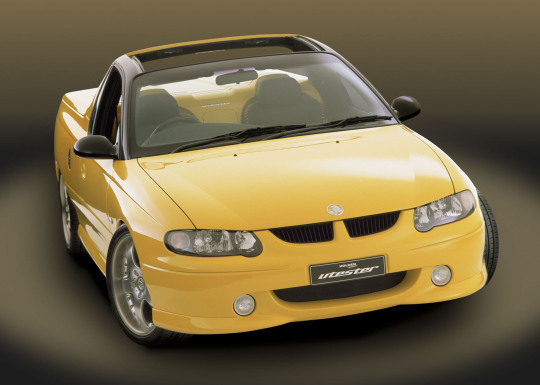
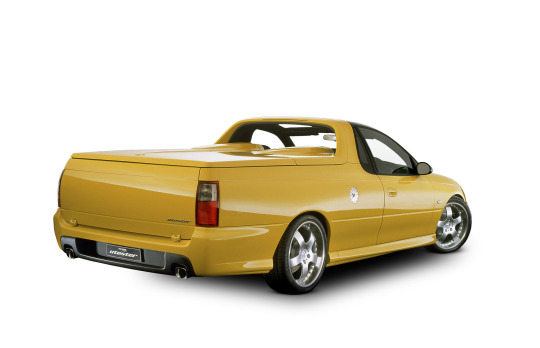

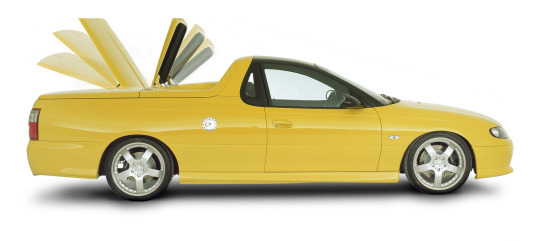




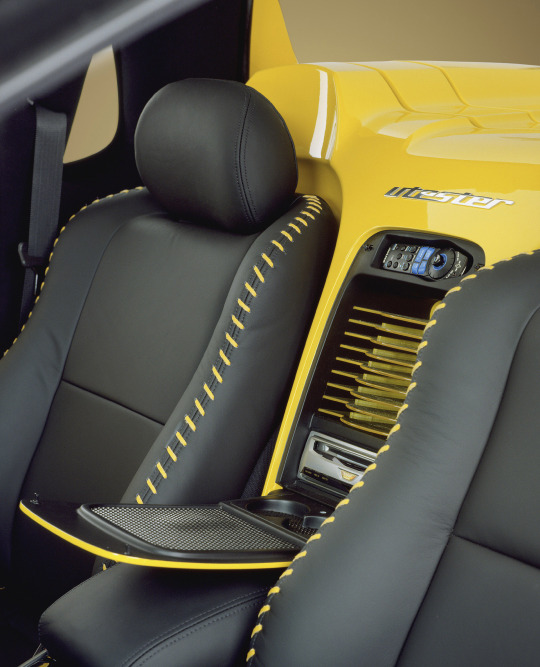
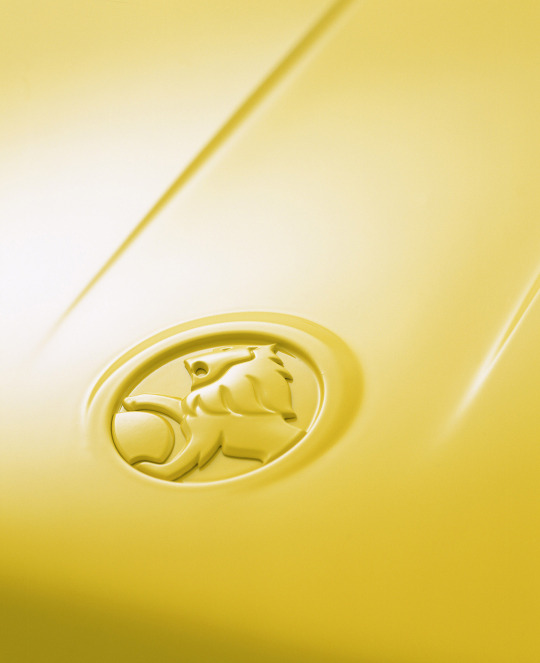
2001 Holden Utester
1 note
·
View note
Photo





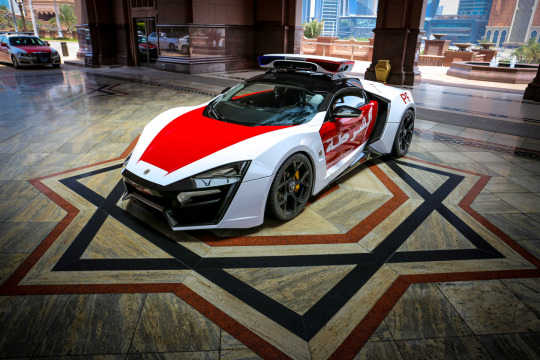

Lykan HyperSport Ekin Patrol Abu DHabi Police
2 notes
·
View notes
Photo





The BMW Group is celebrating its centenary under the motto “THE NEXT 100 YEARS”.
The BMW VISION NEXT 100 provides a glimpse of what “Sheer Driving Pleasure” could look like in the future.
The MINI VISION NEXT 100 offers a completely individualised, permanently available form of urban mobility.
The Rolls-Royce VISION NEXT 100 epitomises bespoke automotive luxury.
#bmw vision next 100#mini vision next 100#rolls-royce vision next 100#bmw group#mini#rolls-royce#bmw
0 notes